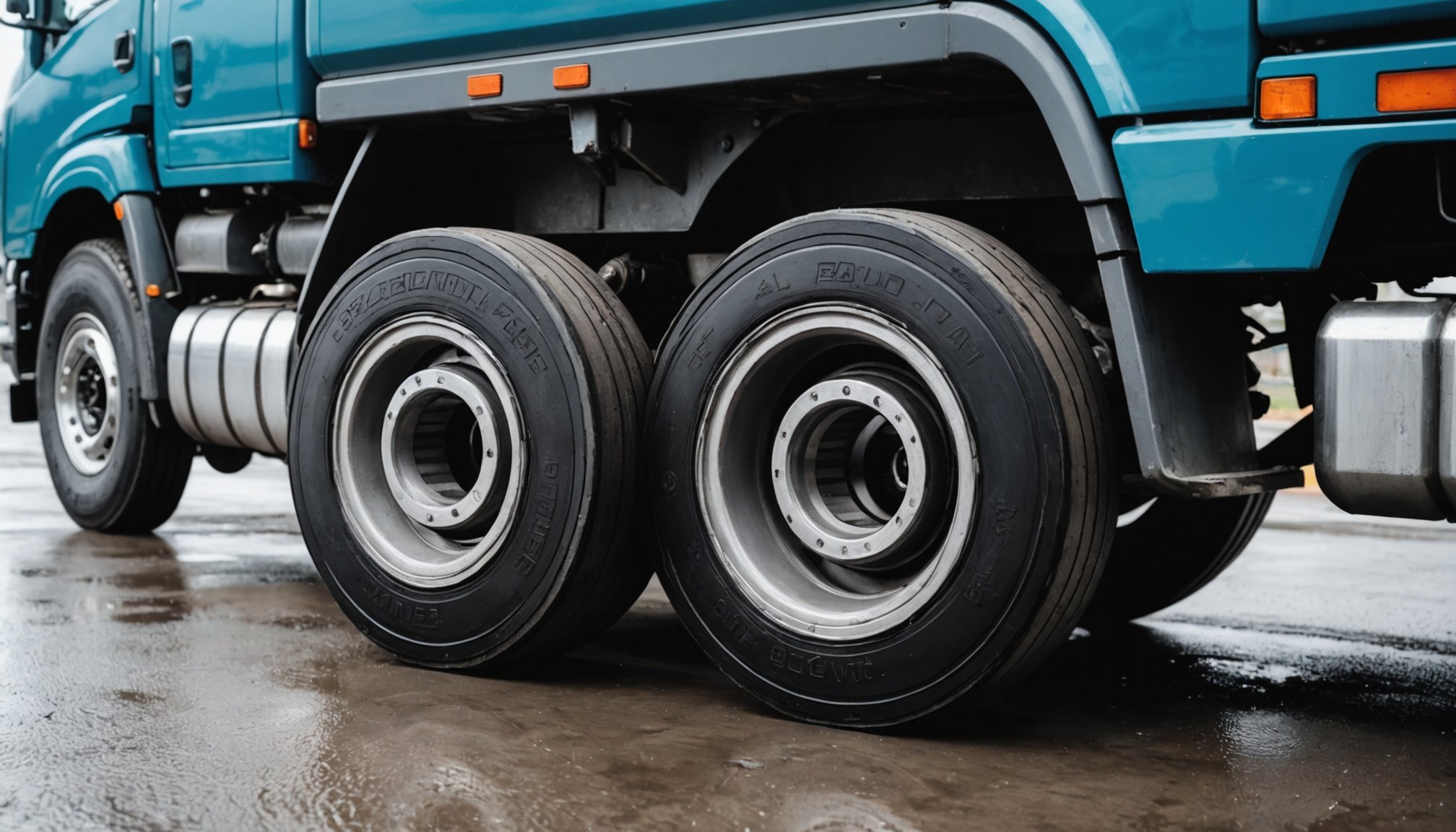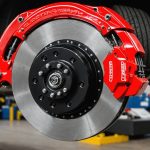Wheel bearings play a pivotal role in preventing accidents for commercial trucks. A neglected wheel bearing can lead to catastrophic failures, risking the safety of drivers and others on the road. Regular inspection and maintenance of these components are essential for optimal performance. This guide details practical tips for wheel bearing care, ensuring safety and reducing costly repairs. Keeping your truck well-maintained guarantees reliability and peace of mind on every journey.
Importance of Wheel Bearing Maintenance
Understanding the role of wheel bearings is crucial for ensuring commercial truck safety. These components are pivotal in supporting the vehicle's weight and enabling smooth wheel rotation. Without proper wheel bearing care, the performance of a vehicle can be severely compromised, leading to dangerous outcomes.
Also read : Enhancing Emergency Stopping Power: Do Upgraded Brake Calipers Make a Difference for Your Vehicle?
Statistics reveal that a significant number of accidents in the commercial trucking industry are attributed to wheel bearing failure. Inadequate maintenance can lead to overheating, increased friction, and ultimately, bearing failure. This not only jeopardises the safety of the driver but also other road users.
Regular maintenance of wheel bearings is essential for commercial trucks. It involves inspecting, cleaning, and lubricating the bearings to ensure they are in optimal condition. Routine checks can prevent the escalation of minor issues into major failures, thus enhancing vehicle performance and safety.
Also to discover : How can I recognize and avoid dangerous driving behaviors in others?
Moreover, investing time in wheel bearing care can extend the lifespan of the bearings, reducing the need for costly replacements. For commercial truck operators, this means fewer breakdowns and increased efficiency. In summary, prioritising wheel bearing maintenance is a proactive approach to ensuring safety and reliability in the commercial trucking sector.
Signs of Wheel Bearing Wear
Understanding the signs of wheel bearing wear is essential for maintaining vehicle safety. Early detection can prevent severe damage and costly repairs. Common symptoms include unusual noises such as grinding or humming, which often indicate that the bearings are worn out. Additionally, a vehicle pulling to one side while driving can suggest uneven wear.
Performing a basic wheel bearing inspection involves checking for play in the wheel. To do this, lift the vehicle and manually rock the wheel back and forth. Excessive movement suggests wear. Another method is to spin the wheel and listen for unusual sounds.
For a thorough inspection, specific tools are required. A jack and jack stands are necessary to lift the vehicle safely. A torque wrench is useful for ensuring wheel nuts are correctly tightened, preventing additional stress on the bearings. A mechanic's stethoscope can help detect subtle noises during rotation, providing a more precise diagnosis.
By recognising these symptoms and conducting regular inspections, vehicle operators can ensure early detection of potential issues. This proactive approach not only enhances safety but also extends the lifespan of the bearings, ensuring smoother and more reliable vehicle performance.
Step-by-Step Wheel Bearing Maintenance
Maintaining wheel bearings is vital for the longevity and safety of commercial trucks. A regular maintenance schedule should be followed, typically every 25,000 to 30,000 miles, or as specified by the vehicle manufacturer. This ensures that the bearings remain in optimal condition.
Cleaning and Repacking Wheel Bearings
-
Remove the Wheel: Safely lift the vehicle using a jack and secure it with jack stands. Remove the wheel to access the bearing assembly.
-
Disassemble the Hub: Carefully take apart the hub assembly to expose the bearings. Keep track of all components for easy reassembly.
-
Clean the Bearings: Use a solvent to thoroughly clean the bearings and surrounding components. This removes old grease and debris, ensuring smooth operation.
-
Inspect for Wear: Examine the bearings for any signs of wear or damage. Replace them if necessary to prevent future issues.
-
Repack with Grease: Apply a high-quality grease to the bearings, ensuring even coverage. This is crucial for reducing friction and preventing overheating.
Proper Installation Tips
- Ensure all components are free from dirt before reassembly.
- Tighten nuts to the manufacturer's specified torque to avoid excessive stress on the bearings.
- Test the wheel for smooth rotation before lowering the vehicle.
Consequences of Neglecting Wheel Bearings
Neglecting wheel bearing maintenance can lead to significant safety risks and operational challenges for commercial trucks. One common type of wheel bearing failure is overheating, which can cause the bearings to seize, leading to sudden wheel lock-up. This not only endangers the driver but also poses a threat to other road users.
Financially, the repercussions of ignoring wheel bearing upkeep are substantial. Repairing or replacing damaged components can be costly, and unexpected breakdowns often result in lost revenue due to downtime. Furthermore, insurance premiums may increase following accidents attributed to poor maintenance.
Case Studies of Accidents
Real-world incidents highlight the dangers associated with wheel bearing failure. In one case, a commercial truck experienced a catastrophic wheel detachment on a busy highway, resulting in a multi-vehicle accident. Investigations revealed that inadequate maintenance was the primary cause. Another incident involved a truck that caught fire due to overheated bearings, causing significant damage and financial loss.
These examples underscore the critical importance of regular wheel bearing inspections and maintenance. By prioritising these practices, commercial truck operators can mitigate safety risks and avoid the severe consequences of neglect.
Industry Standards and Regulations
Understanding truck maintenance standards is essential for ensuring the safety and reliability of commercial vehicles. The industry has established specific guidelines for maintaining wheel bearings, which are crucial components in vehicle operation. These standards are designed to minimise risks associated with bearing failure and to promote regulatory compliance.
Adherence to Regulations
Adhering to these regulations is not just a legal obligation; it is a critical safety measure. Compliance ensures that the vehicle is fit for operation, reducing the likelihood of accidents caused by mechanical failure. Regular inspections and maintenance, as outlined by industry standards, are necessary to meet these requirements. Failure to comply can lead to serious consequences, including hefty fines, increased insurance premiums, and potential legal actions.
Consequences of Non-Compliance
For commercial truck operators, non-compliance can have severe implications. Beyond financial penalties, there is the risk of operational downtime, which can impact revenue. Moreover, non-compliance can tarnish a company's reputation, affecting business relationships and customer trust. Therefore, maintaining regulatory compliance is not only a matter of safety but also a strategic business decision.
Professional Inspection and Replacement Services
Understanding when to seek professional maintenance for wheel bearing services is essential for vehicle safety. If you notice persistent issues like unusual noises or vibrations despite regular checks, it's time to consult a professional. They possess the expertise to diagnose and address complex problems that may not be apparent during routine inspections.
When selecting a reputable service provider for wheel bearing services, consider their experience and customer reviews. A well-established company with positive feedback is more likely to provide reliable service. Ensure they use high-quality parts and follow industry standards. Additionally, check if they offer warranties on their services, which can provide peace of mind.
Professional maintenance companies offer a range of services tailored to your needs. These typically include comprehensive inspections, precise diagnostics, and efficient replacements of worn or damaged bearings. They also provide preventive maintenance plans to extend the lifespan of your wheel bearings. By engaging with professional services, you ensure that your vehicle remains safe and operational, minimising the risk of unexpected breakdowns and costly repairs.
Recommended Tools and Products for Wheel Bearing Care
When it comes to wheel bearing tools and maintenance products, having the right equipment is essential for effective upkeep. For those interested in DIY maintenance, several key tools are indispensable. A torque wrench ensures nuts are tightened to the manufacturer's specifications, preventing undue stress on the bearings. A mechanic's stethoscope helps detect subtle noises, indicating potential issues. Additionally, a jack and jack stands are crucial for safely lifting the vehicle during inspections.
For cleaning and lubrication, selecting the right products is vital. High-quality grease specifically designed for wheel bearings can significantly reduce friction and prevent overheating. It's advisable to choose a product that offers both durability and resistance to high temperatures. Solvents for cleaning should effectively remove old grease and debris without damaging the bearings.
When comparing maintenance products, consider both cost-effectiveness and reliability. While some products may be cheaper, investing in reputable brands often ensures better performance and longevity. Look for reviews and recommendations from other users to guide your choices. By equipping yourself with the right tools and products, you can maintain your vehicle's wheel bearings effectively, ensuring safety and extending their lifespan.
Best Practices for Safe Truck Operation
Ensuring truck safety involves a combination of daily checks, preventative maintenance, and driver training. Daily inspections are essential for maintaining wheel bearing integrity. Before each journey, drivers should check for unusual noises, vibrations, or signs of wear. This proactive approach can prevent minor issues from escalating into major failures.
Preventative maintenance is a cornerstone of safe truck operation. Regularly scheduled inspections and servicing help to identify potential problems early, reducing the risk of unexpected breakdowns. This includes cleaning and lubricating wheel bearings, as well as checking for proper torque on wheel nuts. By adhering to a maintenance schedule, operators can ensure their vehicles remain in optimal condition.
Driver training plays a crucial role in recognising signs of wheel bearing wear and other mechanical issues. Educated drivers are more likely to identify problems early, allowing for timely repairs. Training programs should focus on the importance of daily checks and the impact of neglecting preventative maintenance.
Long-term strategies for truck safety include investing in quality parts and technologies that enhance vehicle performance. By prioritising these practices, truck operators can ensure a safer, more reliable fleet.
Case Studies: Successful Wheel Bearing Maintenance
Exploring maintenance success stories offers valuable insights into effective strategies for commercial fleets. Companies that have implemented comprehensive maintenance programs often see a significant reduction in breakdowns and accidents. For instance, a leading logistics firm reported a 30% decrease in wheel bearing failures after adopting a proactive maintenance schedule. This approach not only enhanced vehicle reliability but also improved driver safety.
Accident prevention is a key benefit of regular wheel bearing maintenance. In one documented case, a transportation company avoided a potentially catastrophic incident by conducting routine inspections. During one such inspection, technicians identified excessive wear in the wheel bearings, which could have led to wheel detachment. By addressing the issue promptly, the company prevented a serious accident, highlighting the importance of vigilance.
Lessons learned from these case studies underscore the value of systematic maintenance practices. Regular training for mechanics and drivers is crucial, ensuring they can identify early warning signs of wear. Additionally, investing in quality tools and products enhances the effectiveness of maintenance efforts. By learning from these examples, other fleets can optimise their maintenance programs, improving safety and operational efficiency.
Future Trends in Wheel Bearing Technology
In the realm of wheel bearing innovations, advancements are reshaping the landscape of technology in trucking. Modern designs now incorporate materials and structures that enhance durability and performance. For instance, ceramic bearings are gaining popularity due to their reduced friction and increased lifespan compared to traditional steel bearings. These innovations not only improve efficiency but also contribute to fuel savings and reduced emissions.
The impact of technology on maintenance practices is profound. Smart sensors are being integrated into wheel bearings, providing real-time data on temperature, vibration, and wear. This allows for predictive maintenance, where issues are addressed before they lead to failure, enhancing safety and reducing downtime.
Looking ahead, predictions for future developments in commercial truck safety include the adoption of autonomous maintenance systems. These systems could automatically adjust and lubricate bearings, further minimising human intervention and error. Additionally, advancements in materials science may lead to even more resilient bearings, capable of withstanding extreme conditions.
As technology in trucking continues to evolve, these innovations promise to revolutionise the industry, making commercial vehicles safer and more efficient. Embracing these trends will be crucial for operators aiming to stay competitive and ensure the longevity of their fleets.











